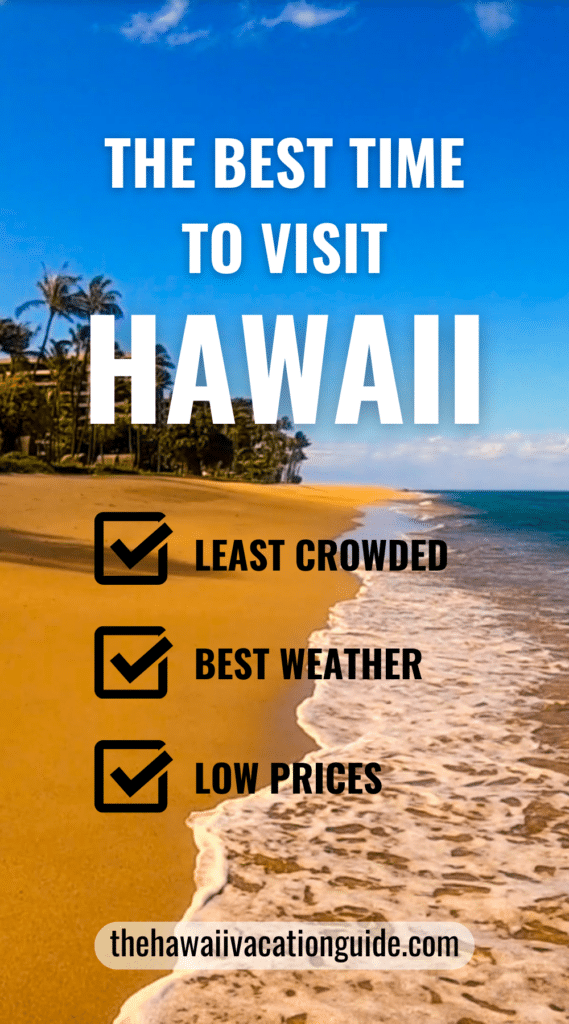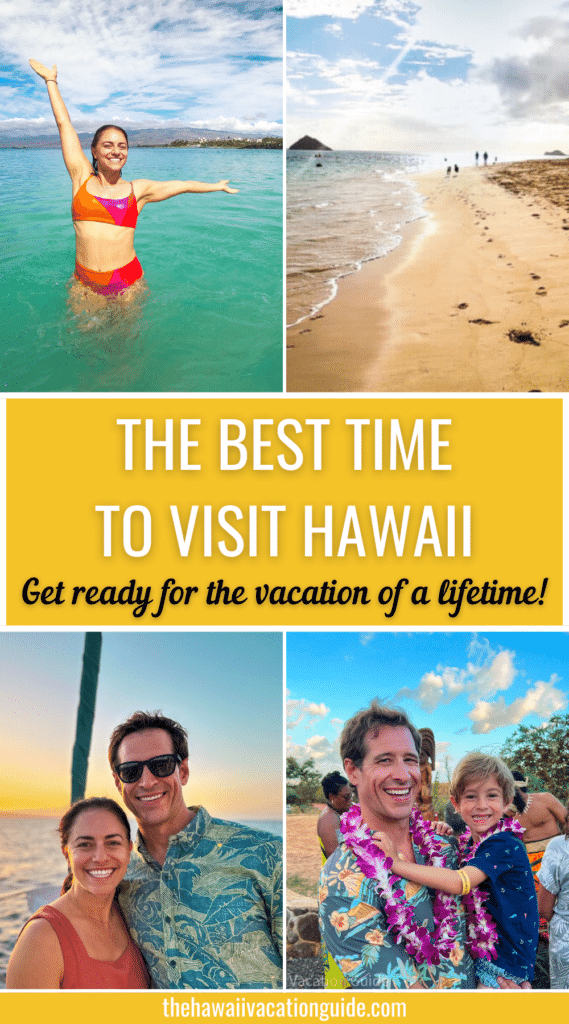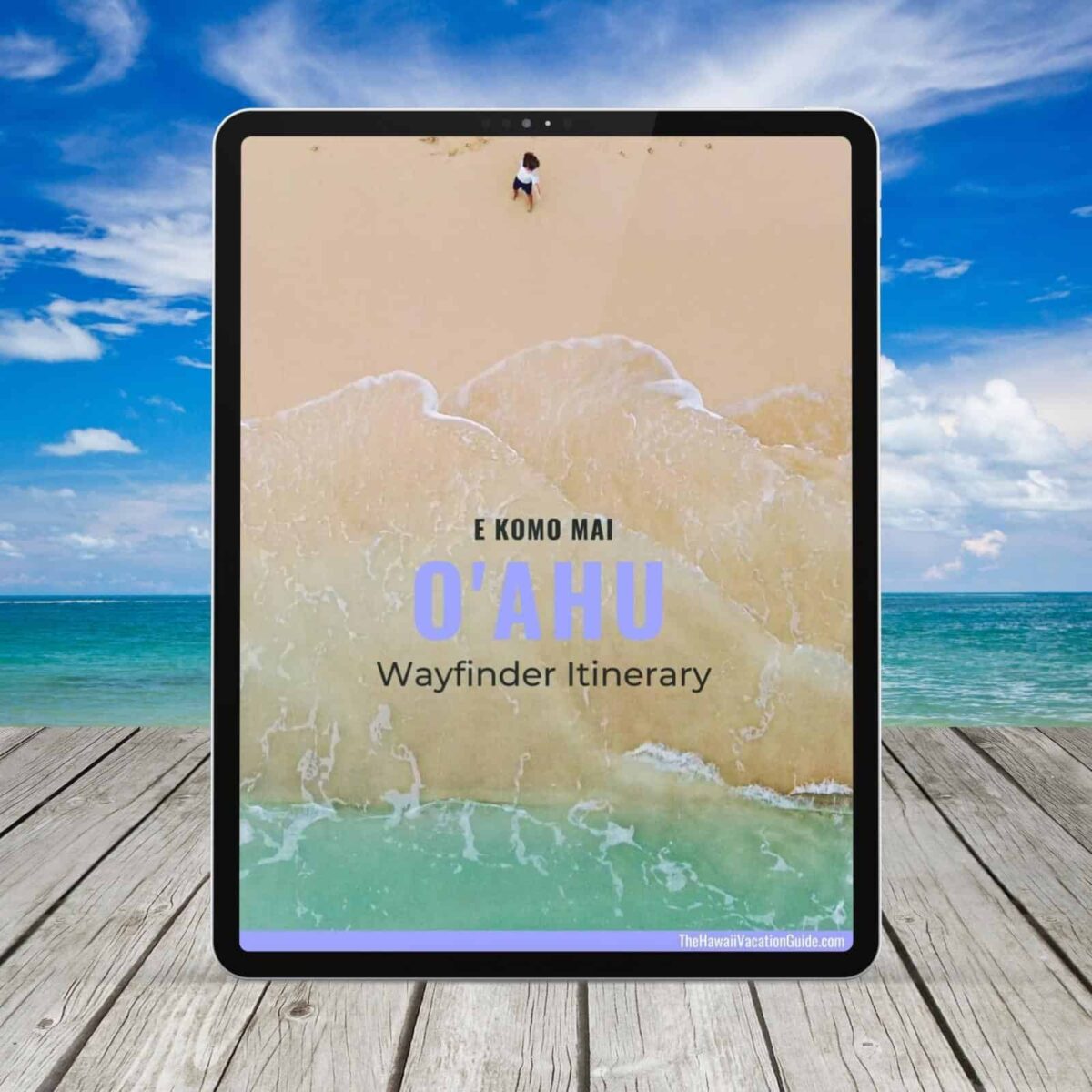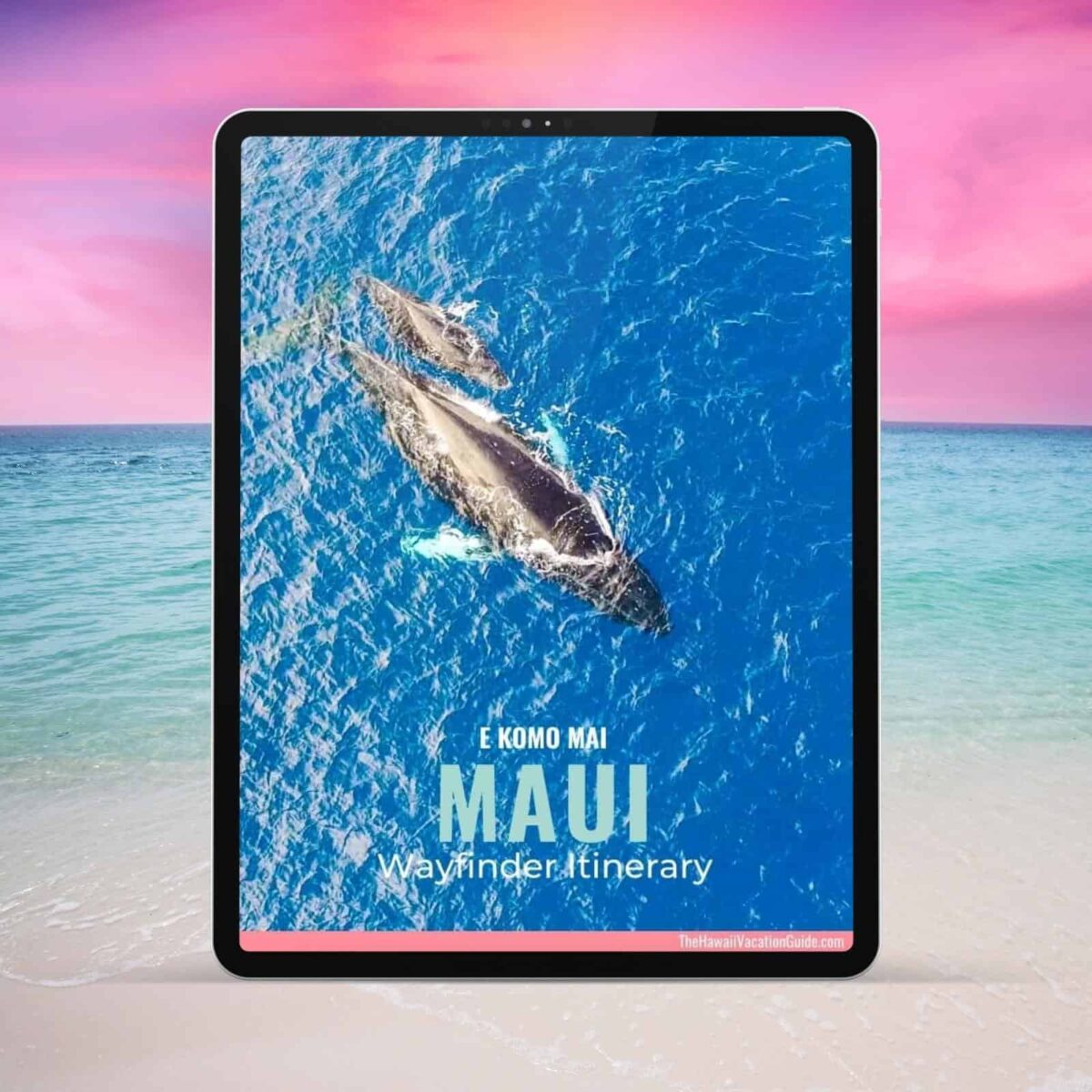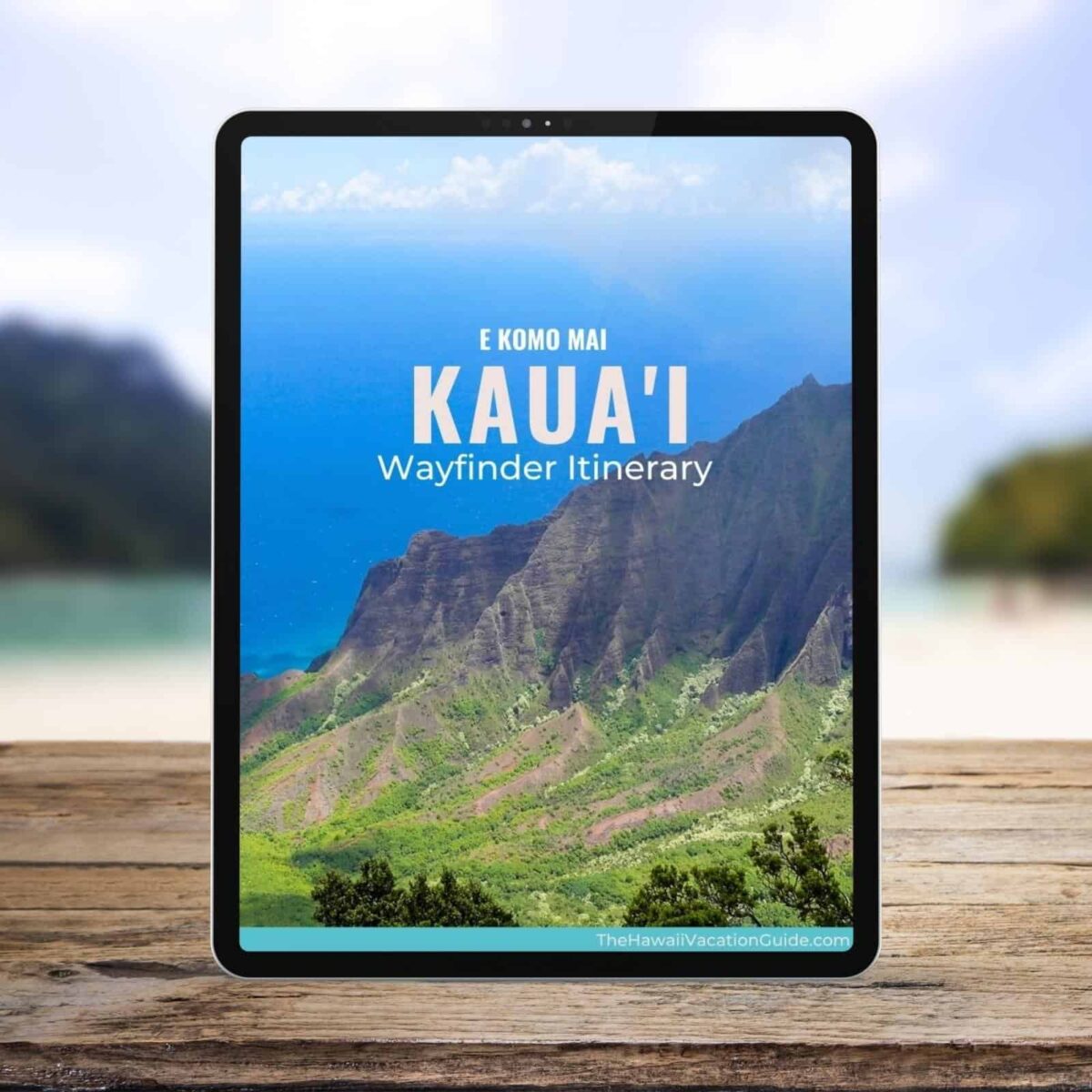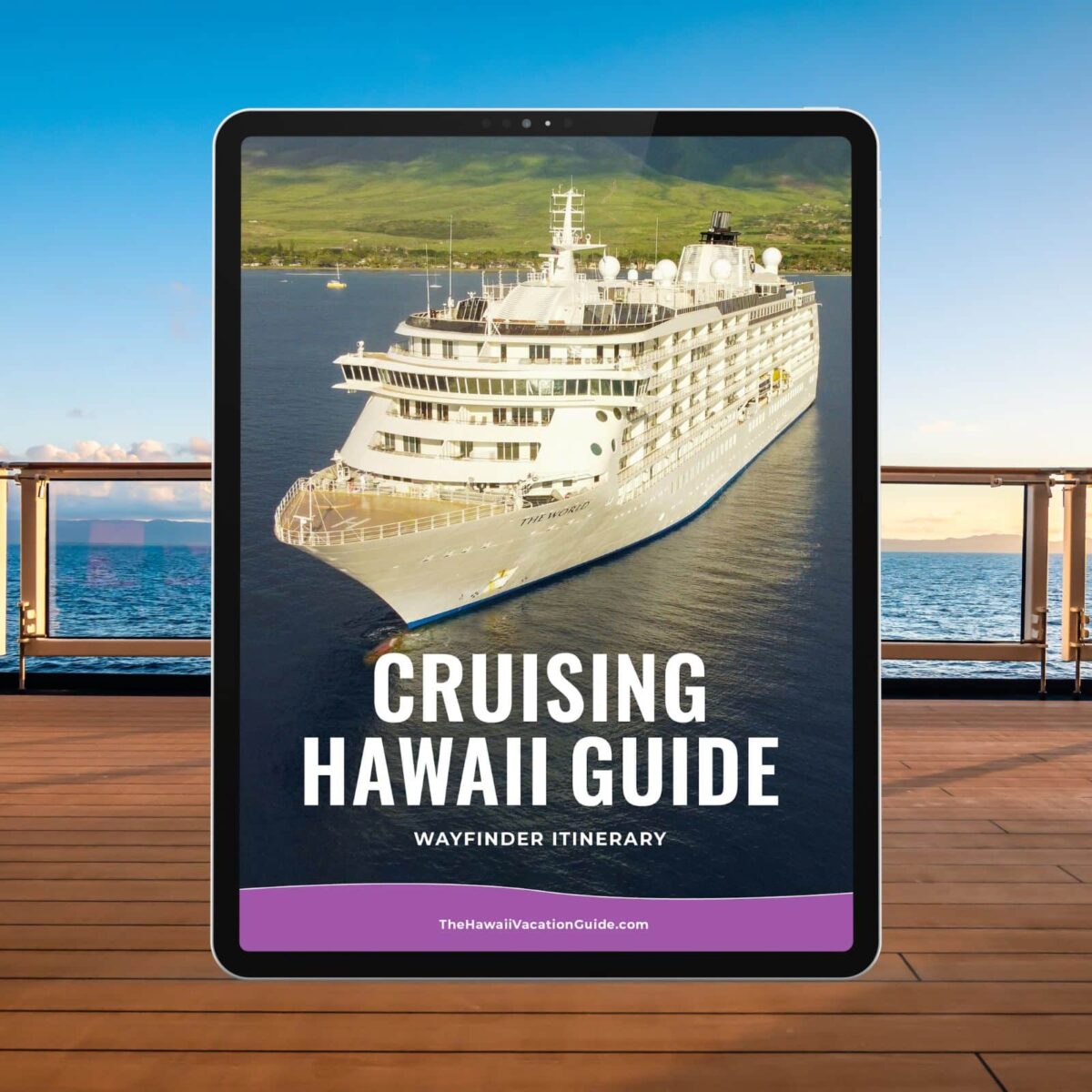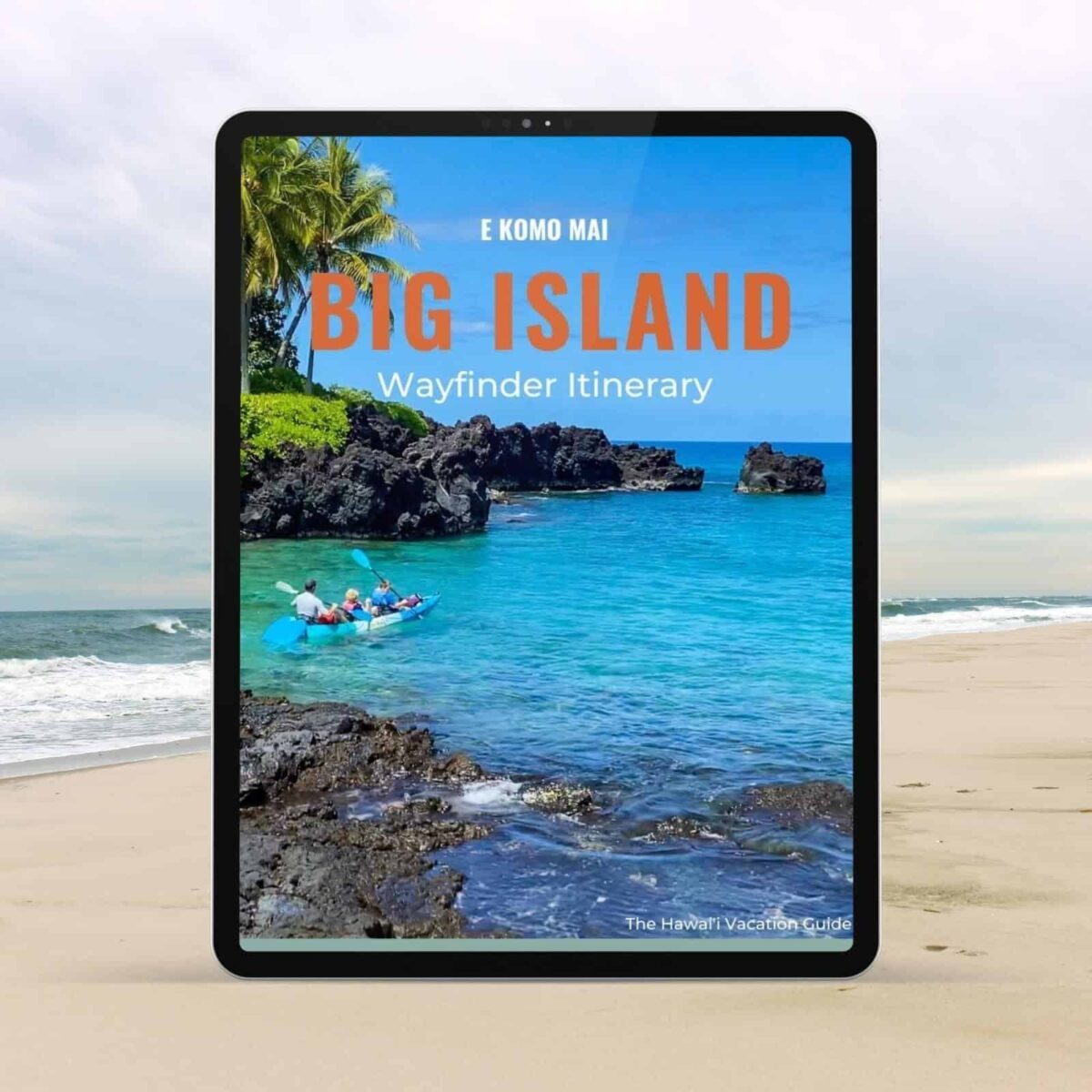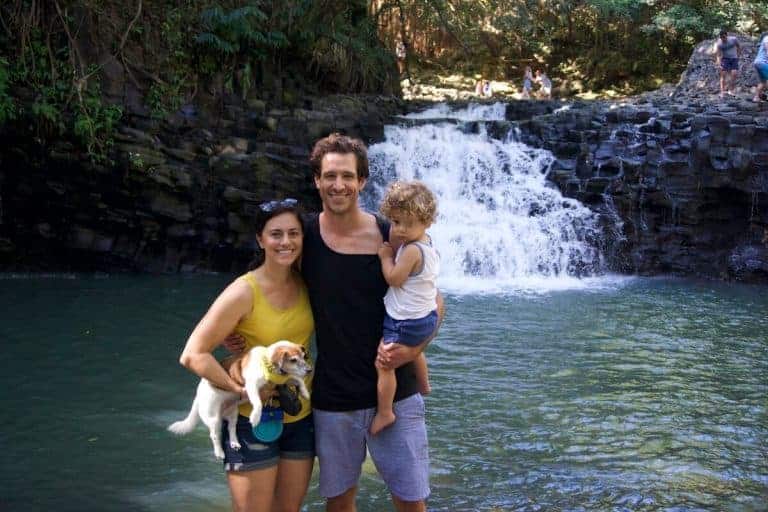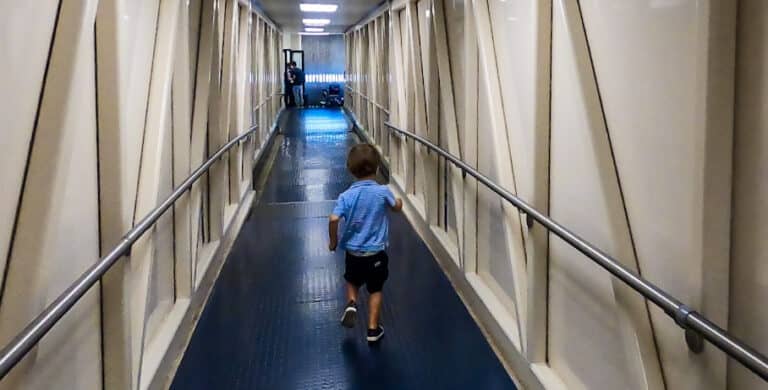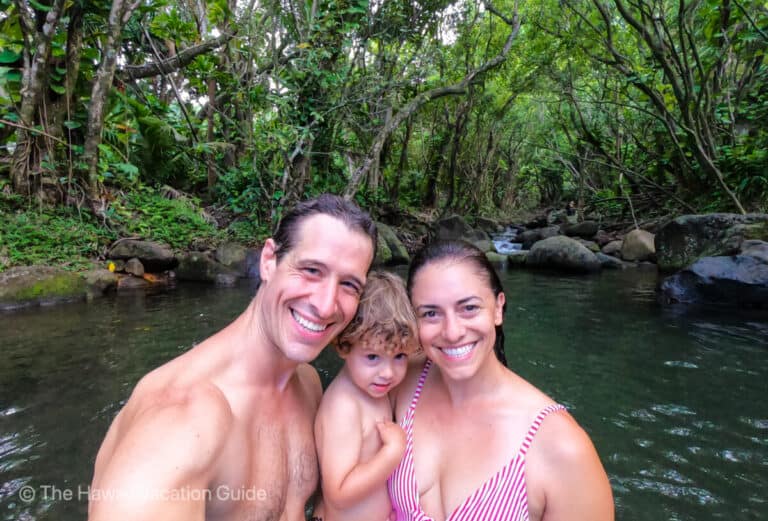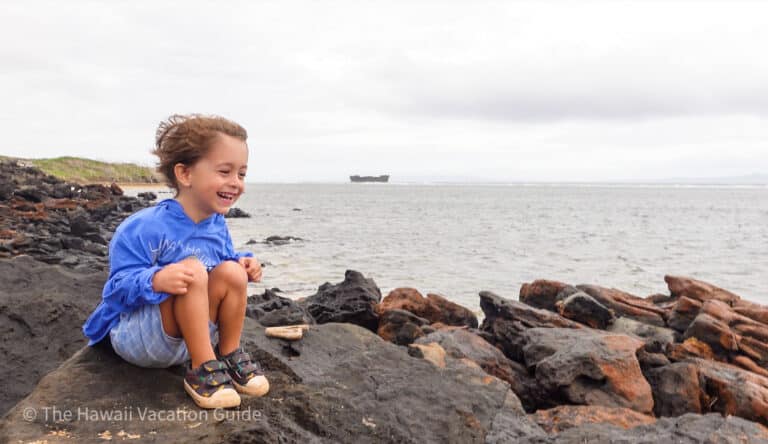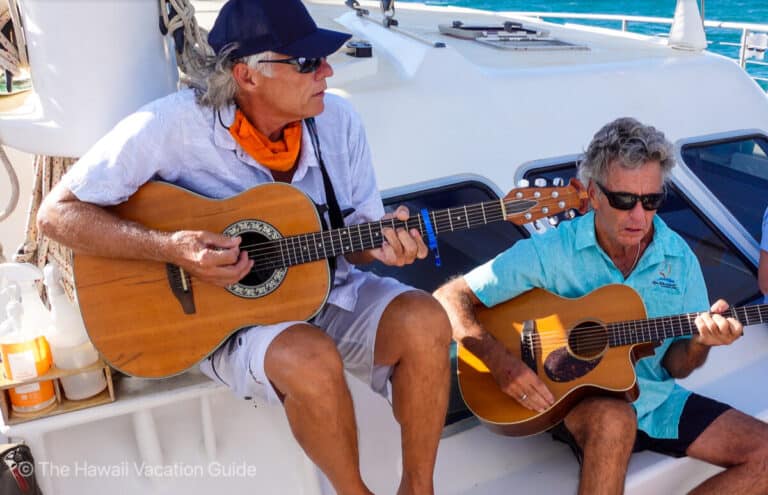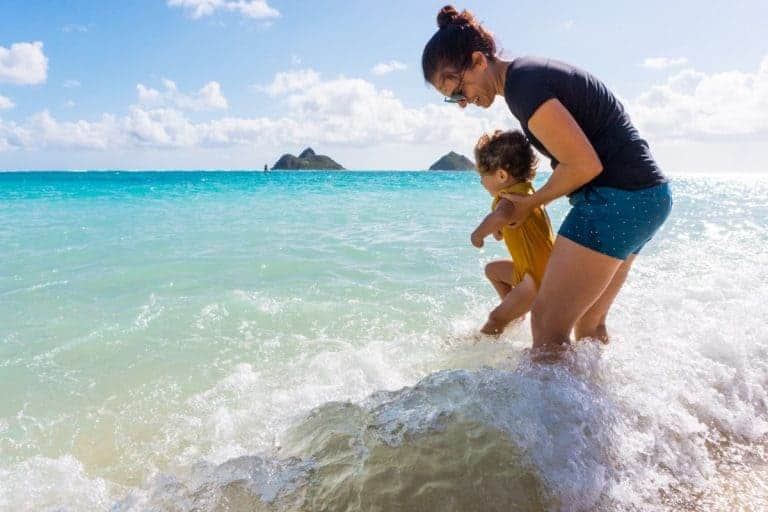The Best Time to Visit Hawaii in 2024: skip the clouds and crowds
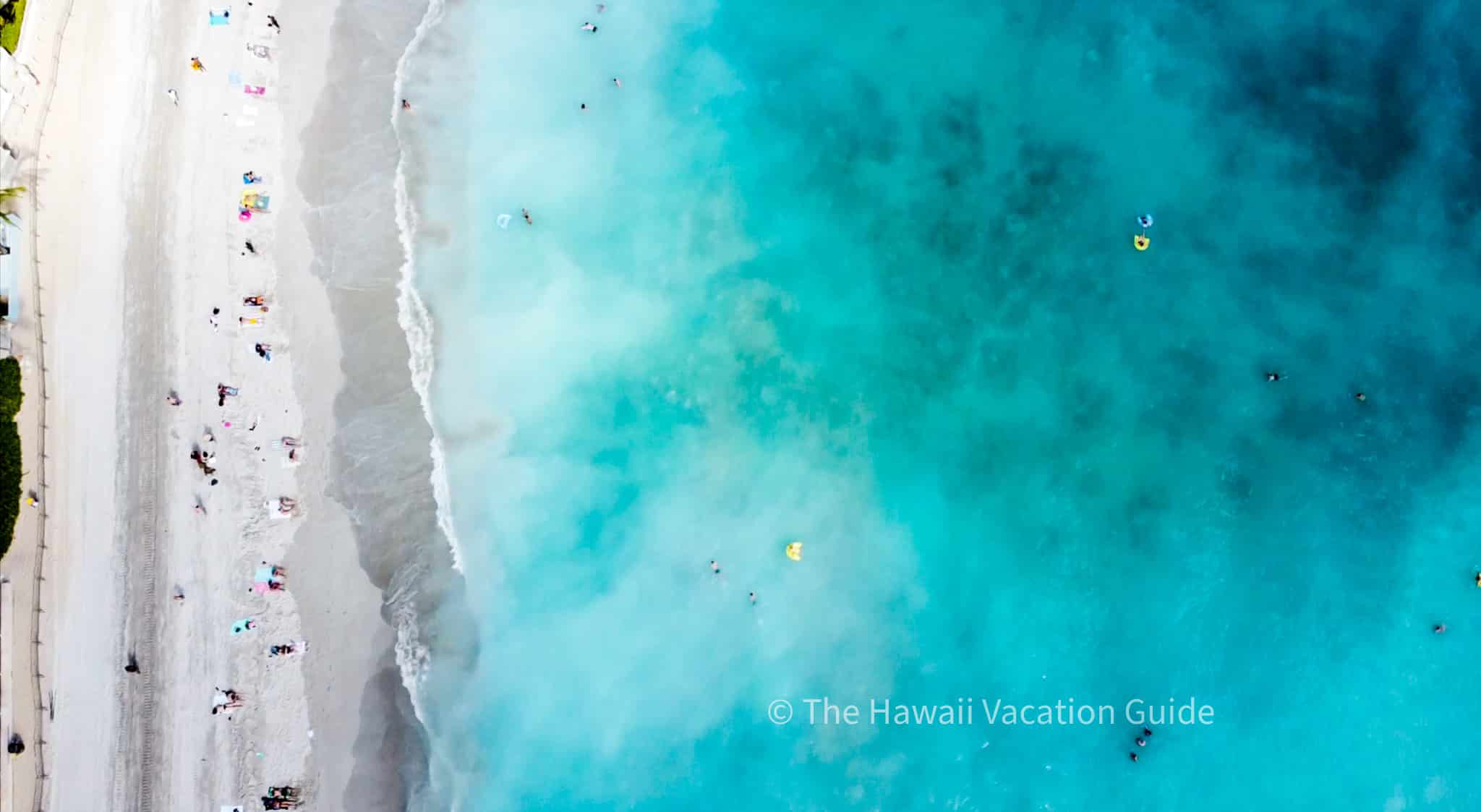
Disclosure: This post may contain affiliate links, meaning if you decide to make a purchase through my links we may earn a commission at no additional cost to you. Read about our affiliate policies here.
As Hawaii sits in the tropics, the weather is always great for the beach and a swim. But there is a best time to visit Hawaii due to the crowds, the wet season, and the high costs.
The best time to visit Hawaii is during the shoulder season months: April, May, September, October, and November (before Thanksgiving). The best month to visit Hawaii is September. During these periods you will find good weather, fewer crowds, and the best prices.
After living on Oahu and Maui, we used data and our own experience to determine the best time to visit Hawaii. While the data can tell you the cheapest time to visit, the atmosphere on the islands requires one to be there for the experience.
Even with the best time to visit Hawaii, we are still adamant that you should come over whenever you can get away from school and work. With flexibility comes rewards so below you will find all the details on why there is a best time to visit Hawaii.
Planning a Quick Trip?
We have you covered. Jump into Hawaii trip planning with quick links to all of our best Hawaii information:
Start Here: Hawaii Trip Planning
Hawaii Done-for-You Itineraries
A Curated List of Our Favorite Tours & Activities
The Best Time to Visit Hawaii Data
To determine the best time to visit Hawaii we looked at the data. We call our analysis the three Cs: Clouds, Crowds, and Costs. The three criteria overlap to determine the best time to visit Hawaii.
We collected data from the Hawaii Tourism Authority Research, Weather Channel, and NOAA to determine the best time to visit Hawaii.
The data doesn’t tell the whole story. While December is a rainy month and expensive, we still recommend planning a Hawaii Christmas vacation. We share the worst times to visit Hawaii but with things to consider!
The Best Month to Visit Hawaii
September is the best month to visit Hawaii. October is a close second for the best time to visit Hawaii.
In September, you will find the best weather, the fewest people on the islands, the best prices for lodging, and the best ocean conditions for swimming and snorkeling. Plus, the vibe is more laid back after the summer busy season. For all those reasons, it is the best time to visit Hawaii.
October is also a great month to visit but we have found the ocean conditions are not as favorable for snorkeling, swimming, and boat trips. October can experience large swells making ocean conditions dangerous, compared to September. This isn’t every day, but a higher probability of occurring compared to September.
When you choose to visit Hawaii, make sure you know what to pack for the time of year. See our Hawaii packing list!
Let’s dive into the details as there is a lot more to know about the best time to visit Hawaii.
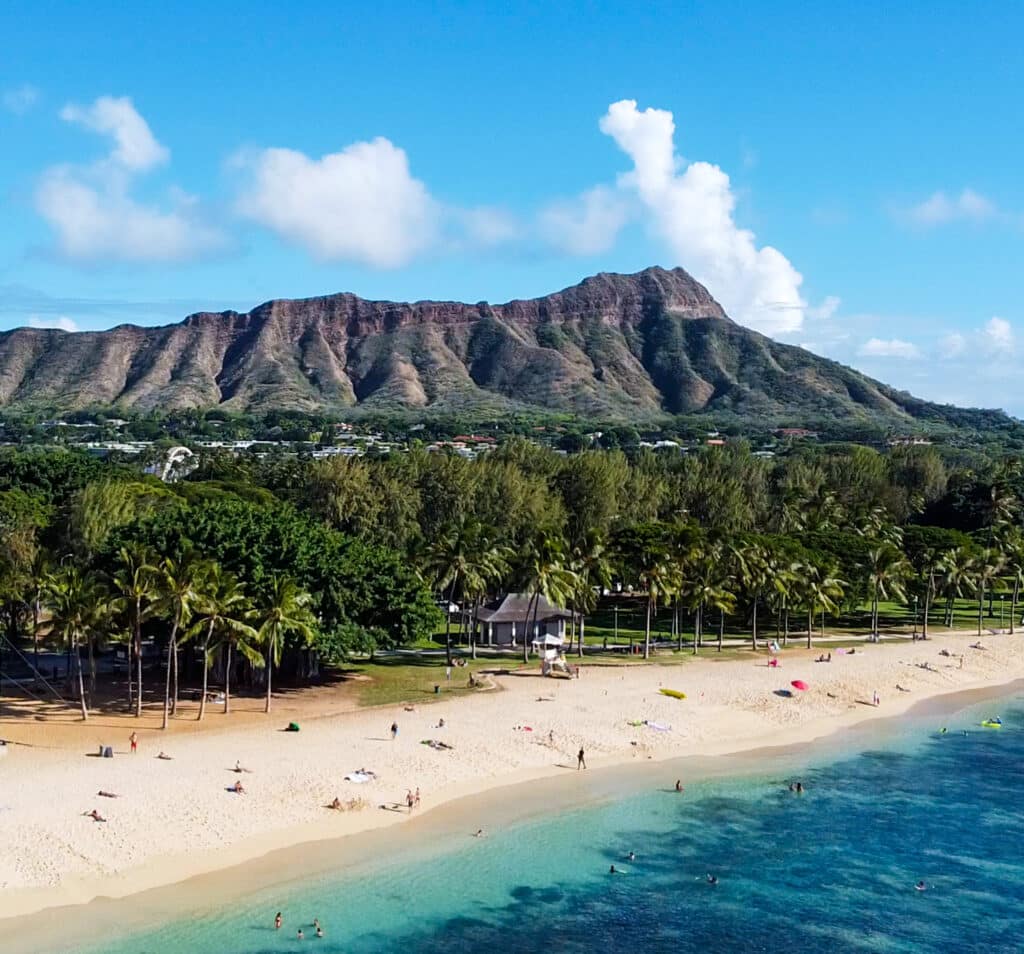
Do you know what Hawaiian island you are visiting? See the best time to visit below.
- Is There a Best Time to Visit Maui? Yes, here is what to know
- When to Visit Kauai
- The Best Time to Visit the Big Island (Hawaii)
- Is There a Best Time to Visit Oahu? The 4 Best Months
The Best Months to Visit Hawaii
While September is our favorite month to visit, we really think that any of the shoulder months are excellent for visiting. These months are:
- April: after any spring break crowds have left
- May: before Memorial Day
- September: after Labor day
- October: pretty much anytime!
- November: earlier in the month before the Thanksgiving rush arrives
When is the Best Time to Visit Hawaii?
We’ve already established that overall, the best times to visit Hawaii are the shoulder seasons of September through November (before Thanksgiving) and April/May. But what if you’re looking for the best time to visit Hawaii based on specific criteria? We have you covered.
The Best Time to Visit Hawaii for the Weather
Hawaii has two seasons compared to four on the mainland of the USA. For most of Hawaii, there is summer between May and October and winter between November and April.
Hawaii is in the tropics, where the length of day and temperature are relatively uniform throughout the year.
While we did say that the temperatures are warm year-round, Hawaii does still get rain. And while you are heading to a beach destination, you probably want to minimize your chances of rain.
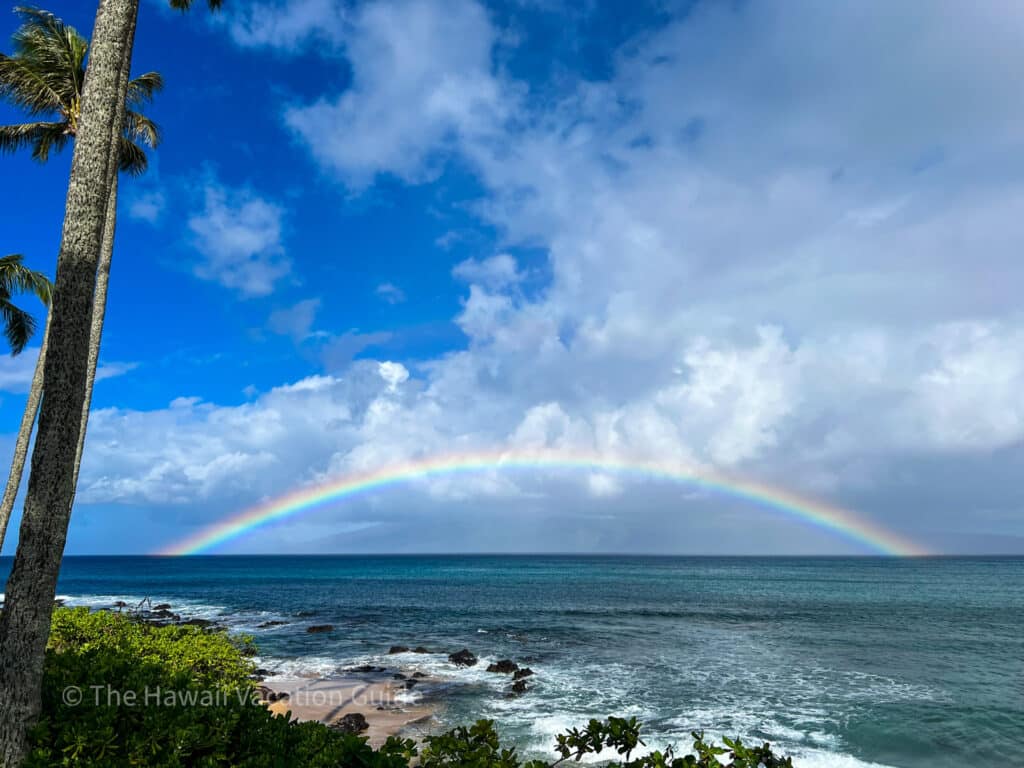
As you can see from the chart below, Hawaii experiences peak rain from November through March. Though to be fair, rain varies on different sides of each island — we are showing average rainfall for one popular visitor destination on each island.
If you do get stuck in the rain in Hawaii, see our What To Do in Hawaii When It Rains for a list of rainy day activities.
Therefore, to avoid the rain and cloudy days the best time to skip Hawaii’s rainy season visit Hawaii is during Hawaii’s summer or dry season.
The rains are warm in Hawaii and don’t last long. It may rain in the morning and then clear up for a beach day. All-day rains are rare, even during the winter. Plus, rain brings rainbows! We think you should still keep Hawaii in November in the running if you’re still not sure.
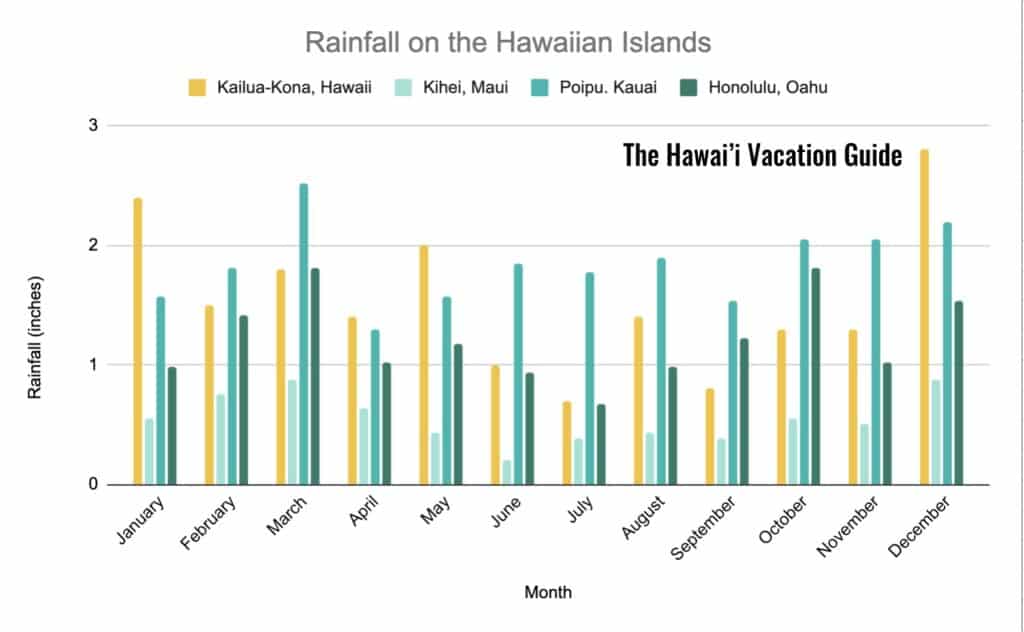
The popular places to stay on each of the major Hawaiian Islands are located on the leeward sides. The leeward side of the island gets less rain and has more sunny days compared to the windward side. The leeward side gets most of its rain during a few winter storms.
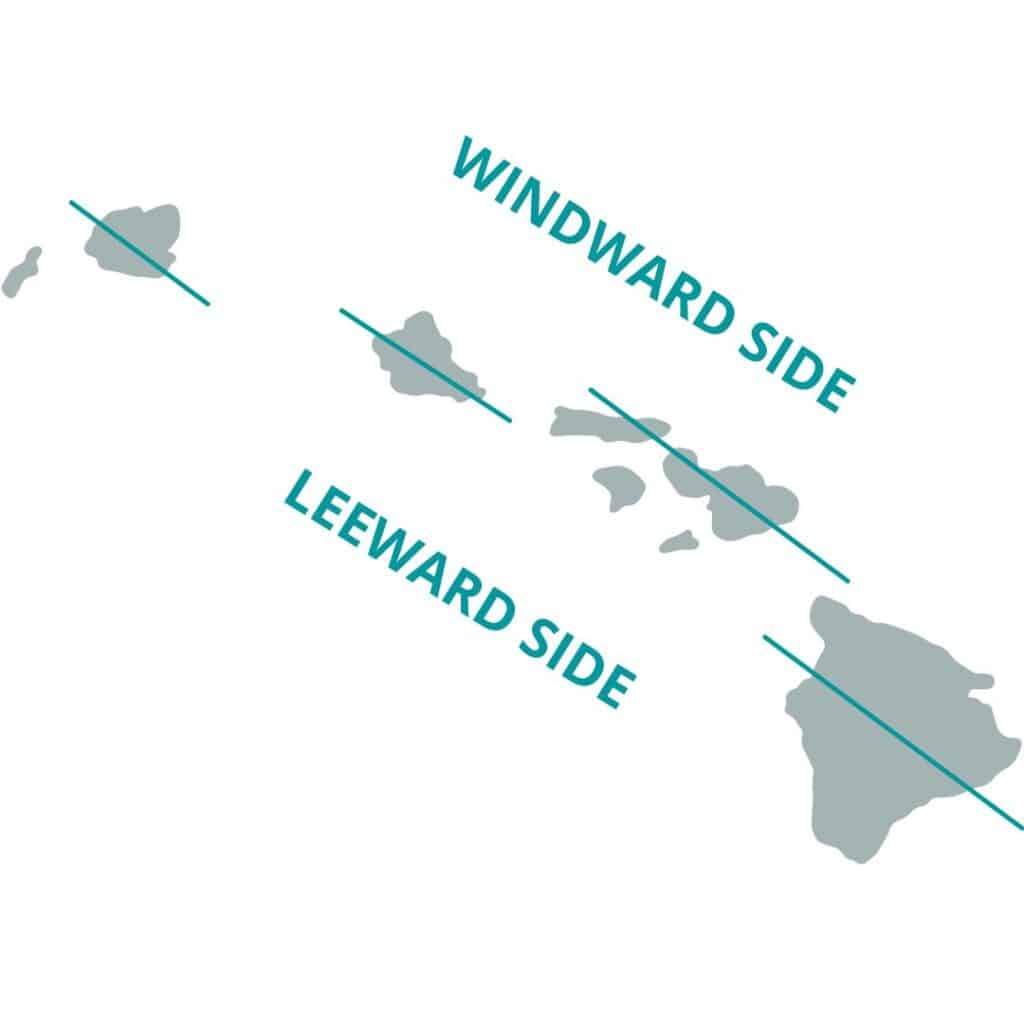
Want to know where to stay in the Hawaiian Islands?
- Kaanapali vs Wailea: Where to Stay on Maui
- Where to Stay on the Big Island
- Which Part of Oahu Should You Stay: Waikiki, North Shore, or Ko Olina
- Princeville or Poipu: Where to Stay on Kauai
The coldest temperatures in Hawaii are from January through March where the average low temperature is the high 60s to low 70s.
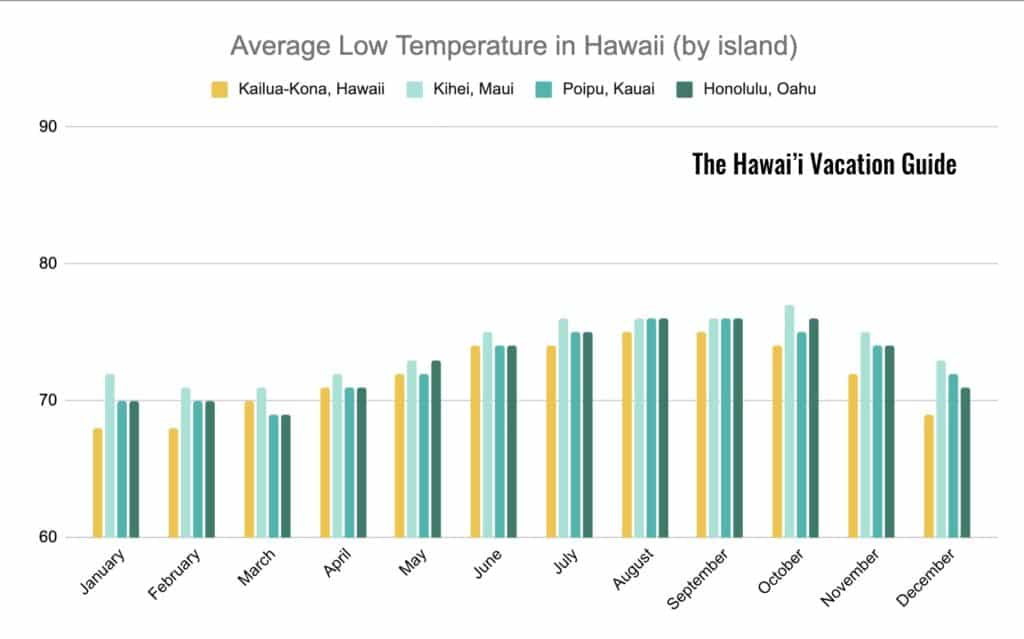
The summers can get too hot for some, especially along the ocean on the leeward sides of the islands. Lahaina translates to “cruel sun” in Hawaiian due to the hot and dry weather. But, it is rare to get temperatures in the 90s even during the summer.
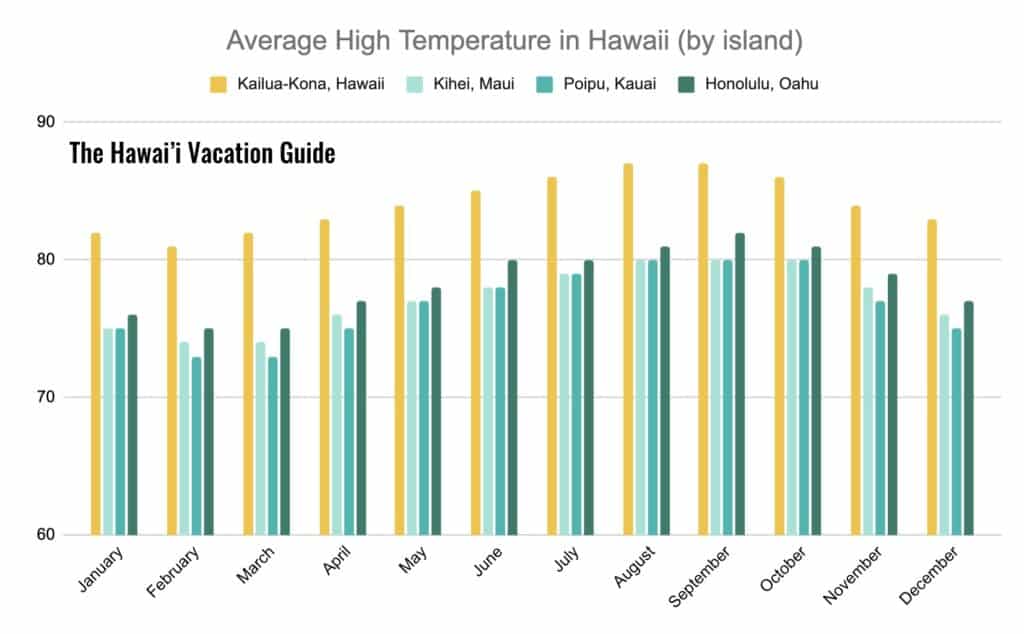
If you’re looking for warm temperatures but not too hot, the shoulder seasons are the best time to visit Hawaii. We prefer September for the best weather in Hawaii as the hot days are waning and the rainy season hasn’t started yet. September is the end of Hawaii’s summer.
Kauai is a little more complicated when it comes to weather. See Erica’s article on the best time to visit Kauai if you’re planning a Napali Coast Cruise or other activities.
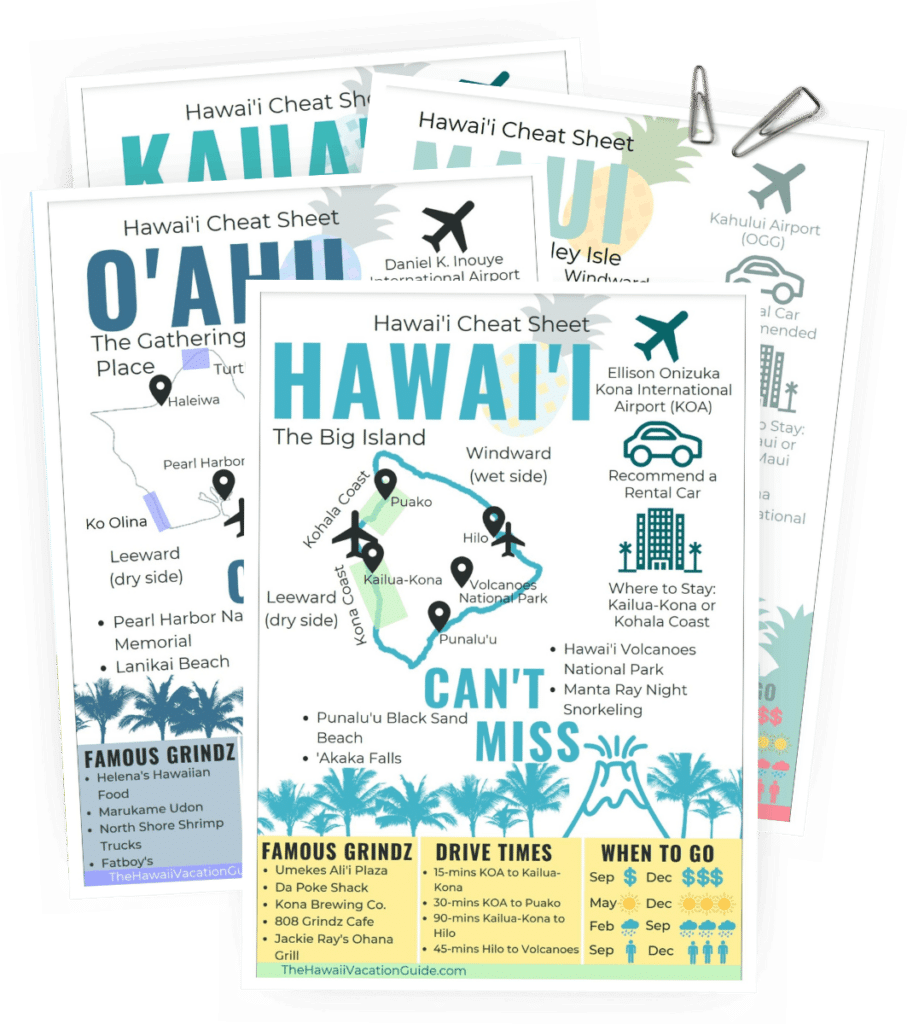
Free Download!
Hawaiian Island Cheat Sheets
Sign up & we’ll send you our island cheat sheets so you can get to know the islands like the back of your hand!
We’ll share 4 can’t-miss activities on each island, a map with the main sights in town, & famous local grindz (eats)!
The Best Time to Visit Hawaii to Avoid Hurricane Season
Hawaii hurricane season runs June 1 – November 30th. While hurricanes don’t occur or cause damage or destruction every year, it’s something to be aware of as you book your trip. Hurricanes causing destruction in Hawaii are rare. The last three hurricanes that caused damage on Hawaii are Hurricane Lane (2018), Hurricane Iniki (1992), and Hurricane Iwa (1982). The majority of the damage from Hurricane Inkiki was on Kauai.
Even if a hurricane doesn’t cause destruction or harsh weather (many of them veer off the path of Hawaii), it can still be disruptive to your vacation. When you get a hurricane warning while on your trip, you can expect to have things disrupted for a few days until the threat passes. For example, if you have a boat trip planned, it will likely be canceled as they wait for storm warnings to pass.
The Best Time to Go Swimming in Hawaii
The ocean temperature around Hawaii varies from 71 degrees in the winter to 80 degrees during the summer. You can go swimming year-round in Hawaii without a wet suite.
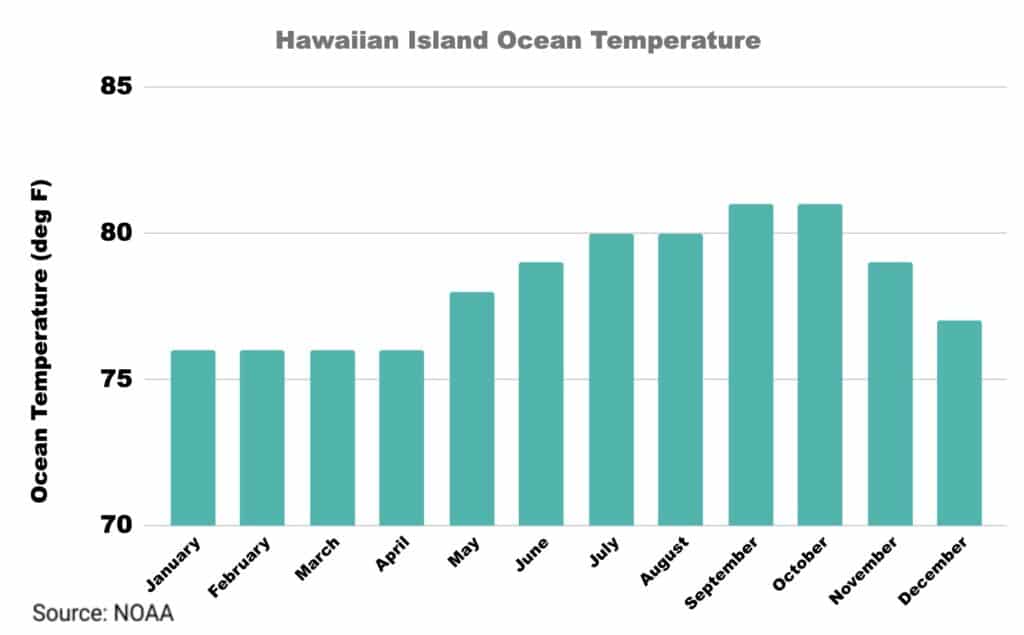
While the ocean stays warm year-round in Hawaii, the ocean conditions change a lot from the summer to the winter. The best time to go swimming in Hawaii is in the summer as you will have a higher probability of calm conditions on the north and south shores of the islands.
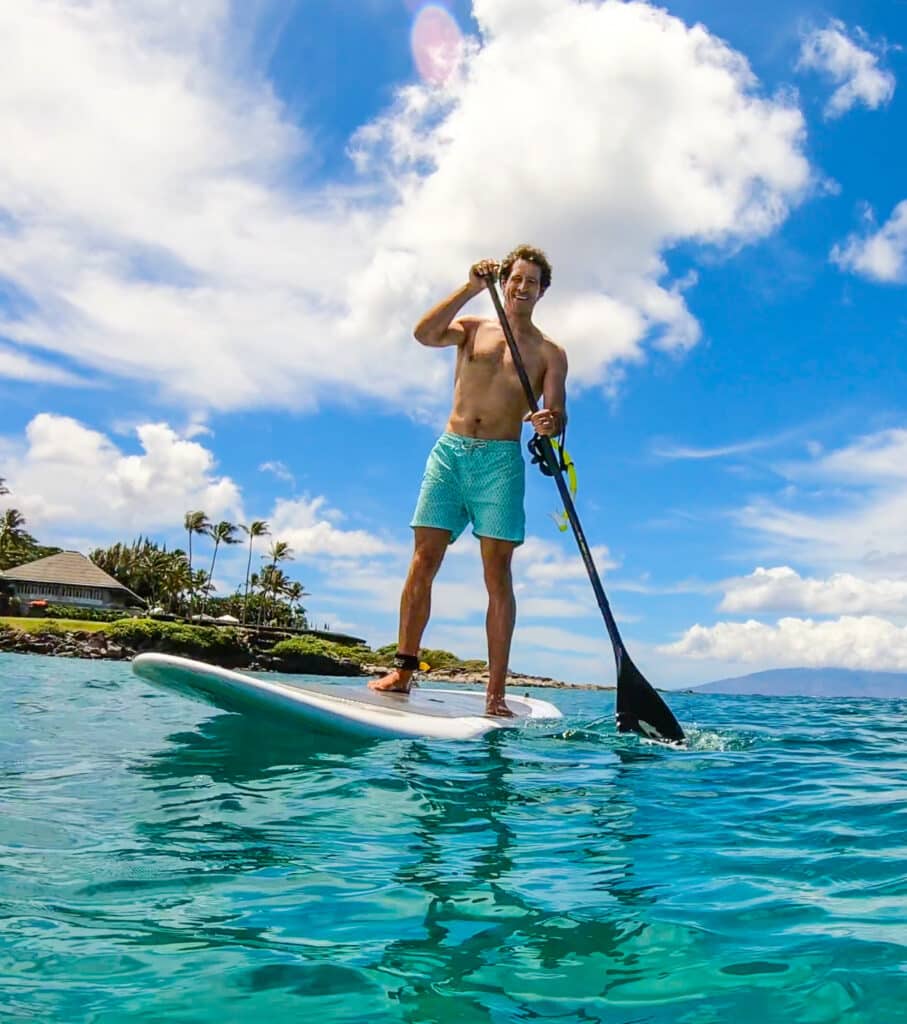
Always check lifeguard flags, ocean conditions, and Hawaii Beach Safety before you head out. See our articles below for safety information.
Related articles:
- The Best Snorkeling in Hawaii by Month
- 5 Best Big Island Beginner Snorkeling Spots
- Swim Without Fear: The Best Places to Snorkel on Maui
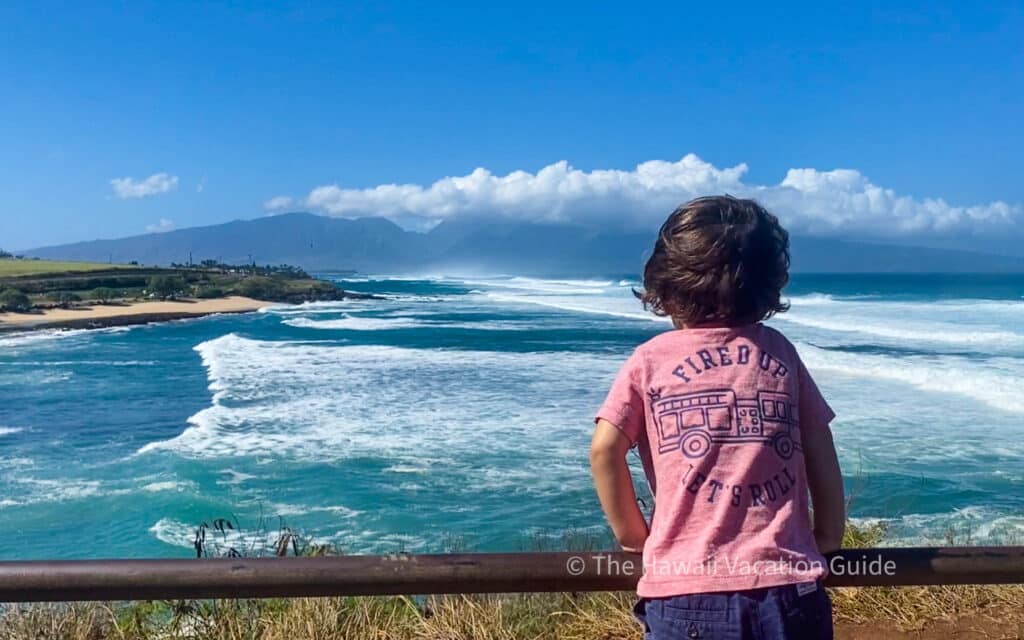
Large waves and strong currents are caused by storms thousands of miles away in the Pacific.
During the winter, storms from Alaska create large waves (and big wave surfing) on the north shores of the Hawaiian Islands. Storms from the southern hemisphere are blocked by other islands but you can still experience large swells during the summer on south shores of the Hawaiian Islands.
The Best Time to Visit Hawaii for The Fewest Crowds
If you’re worried about the islands being to busy during your vacation, pick a month when the daily visitor census is low.
January, February, September, and October have the fewest people on the Hawaiian Islands. To avoid the crowds, these months are the best time to visit Hawaii.
September and October are the least crowded as visitor counts drop to the islands after Labor Day.
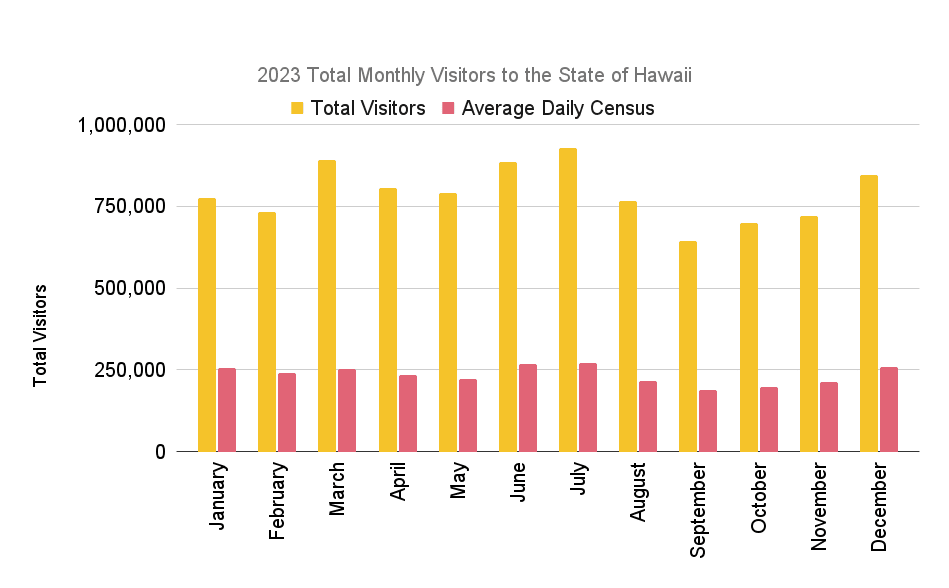
While the pandemic and fires have caused visitor counts to vary dramatically from previous years, the trends in the ebb and flow of visitors remained the same. September and October consistently bring the least number of people to Hawaii. When we lived on Maui, those months were a nice break from the summer crowds.
Related articles:
- Visiting Maui in the Winter: Is It a Good Idea?
- Planning a Trip to Hawaii: 15 Essential Details
- Hawaii in August: Everything to Know For Your Trip
In the 2023 visitor count by Hawaiian Island graph below, you can see that Oahu receives far more visitors than the other islands. If you’re looking to beat the crowds, head to Kauai or the Big Island.
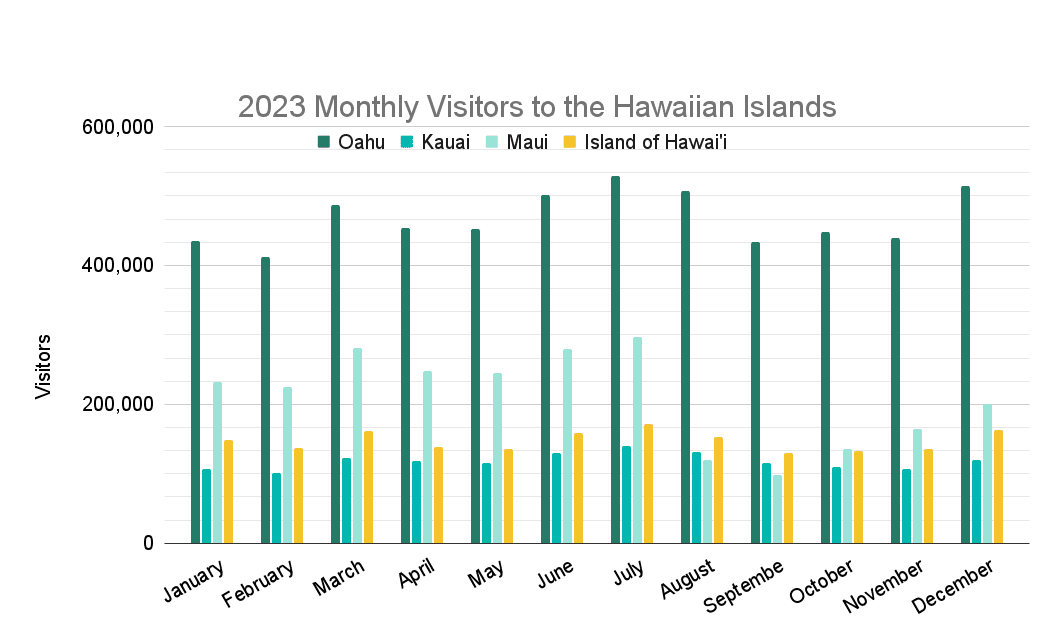
The Best Time to Visit Hawaii for the Cheapest Costs
Lodging will be your biggest expense when you visit Hawaii. Hotel and vacation rental rates vary by supply and demand. Hence, the busy periods of the summer and winter experience a surge in average daily rates.
The lowest hotel rates were in September in 2019. From 2021-2023, hotel rates also experienced a dip compared to the summer and winter months. FYI, Oahu is the cheapest Hawaiian Island to visit thanks to hotel prices.
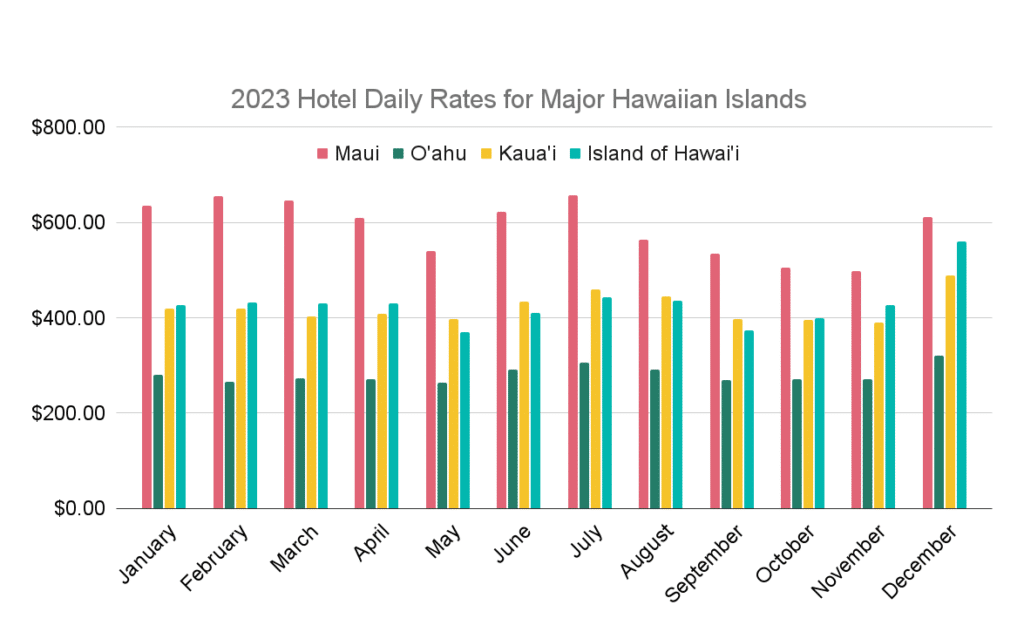
Vacation rental daily rates are also low in the fall. The lowest rates for vacation rentals are found in September, October, and early November (prior to Thanksgiving). October had the lowest vacation rental rates in 2019 and 2021-2023.
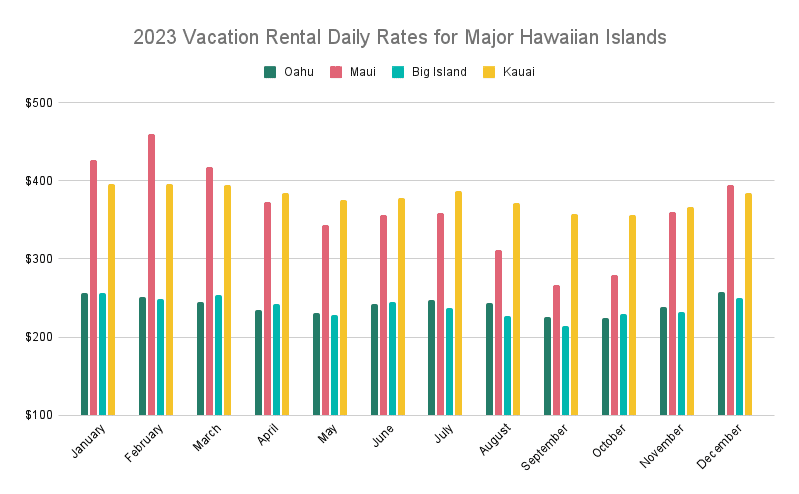
Car rental rates track with lodging rates as they base the price on the amount of demand. Hence, you will find the lowest car rental rates in September and October.
For all of our trips to Hawaii, we price shop on Discount Hawaii Car Rental. We find they have the best prices with no pre-pay for the national car rental companies. We share our favorite local car rental companies here.
Airplane tickets are not as seasonal. See the articles below for booking your flight to Hawaii.
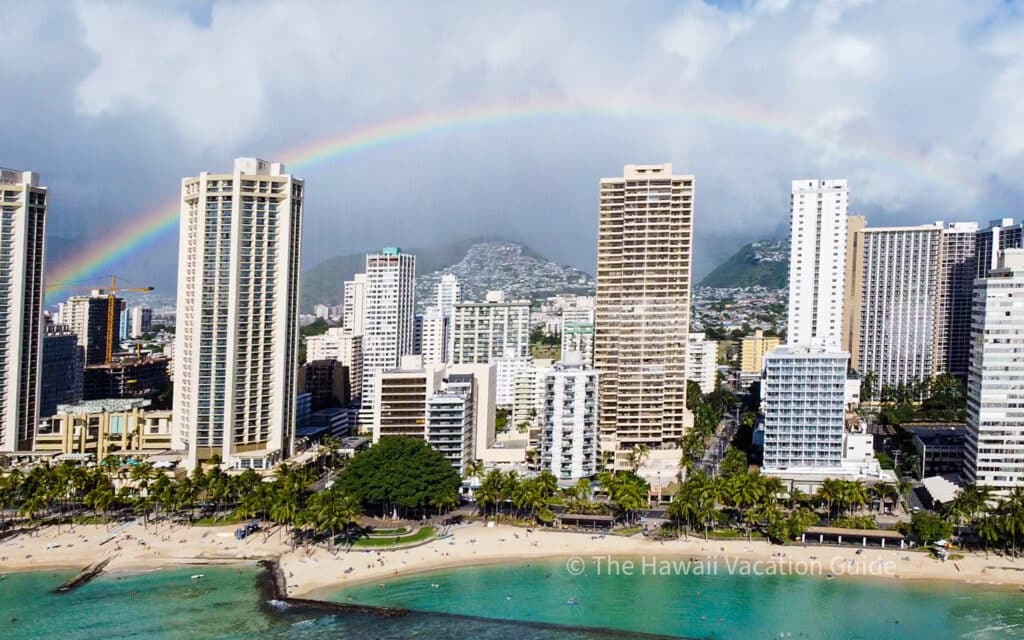
The Best Time to Visit Hawaii for Whale Watching
If you’re hoping to get a glimpse of the majestic humpback whales that migrate to Hawaii each year, plan your trip sometime between December and the end of March. While you can start spotting whales as early as October or as late as May, the peak whale watching season is during those four months.
If you want to get really specific, the peak months for whale watching are mid-January through March. This is when you’ll find official whale counts happening. And if you’re trying to figure out what island is the best for whale watching, that would be Maui!
To give you an example, the data from the whale counts on February 24, 2024 is below. These are the total number of whale sightings on each island for that day:
- Maui: 948 whales
- Oahu: 363 whales
- Kauai: 239 whales
- Hawai’i (Big Island): 466 whales
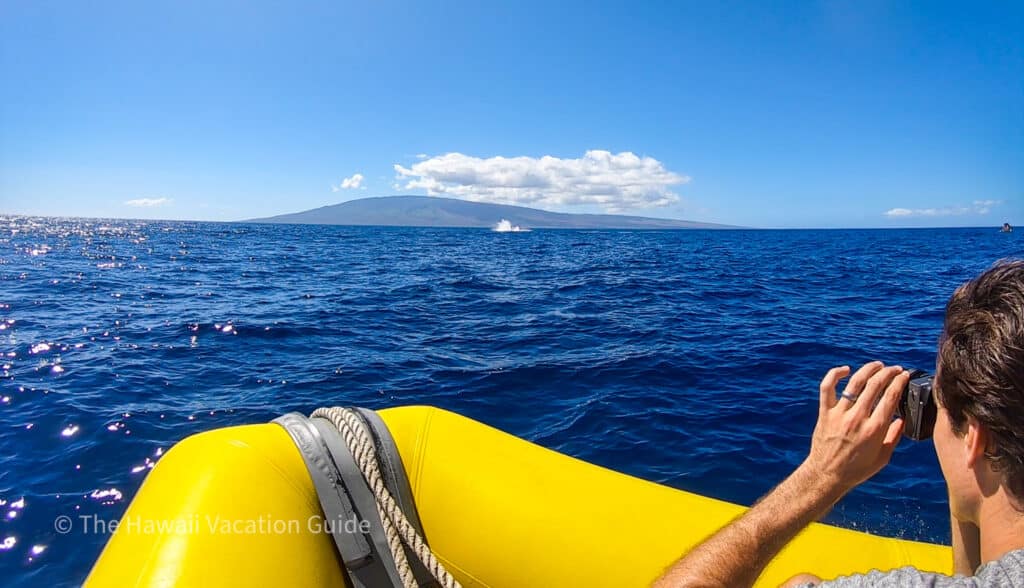
The Best Time to Visit Hawaii by Island
The best time to visit Oahu
Oahu is the most popular island to visit — it receives over 50% of the total visitors to Hawaii! And for good reason — Honolulu is a vibrant city, there are so many cultural and historic sights, and it is the cheapest Hawaiian island to visit. You’ll save big on a hotel room to Oahu, even during the peak summer travel season:
July 2023 average daily rate for hotel rooms:
- Oahu: $306
- Big Island: $442
- Kauai: $458
- Maui: $656
Source: The Hawaii Tourism Authority
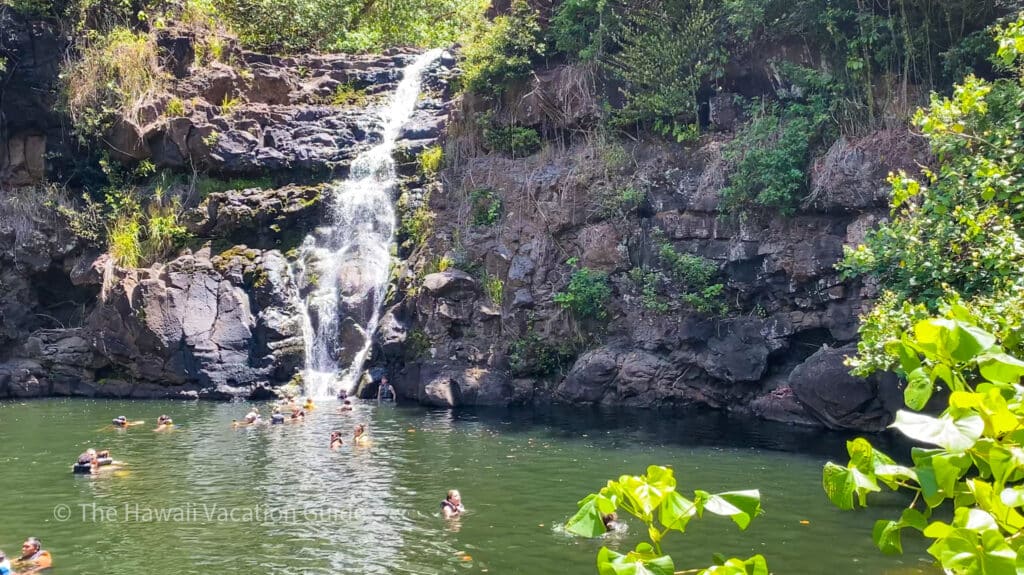
Oahu is great to visit year round, but since it does get so busy, we really like to avoid the summer months. The main area of Waikiki is on the leeward side of the island, so it receives relatively little rain year round. And if you head out to Ko Olina, you’ll be met with sunny skies practically year round.
One thing to note is that you won’t want to visit the North Shore of Oahu during the winter months is you’re hoping for ocean conditions you can swim in. The North Shore of Oahu is home to big wave surfing competitions like the Vans Triple Crown of Surfing. During those winter months the Pacific Ocean shows you just how powerful it is. While you won’t get in the water, it’s amazing to watch the big wave surfers.
Read more about the best time to visit Oahu.

Free Download!
Hawaiian Island Cheat Sheets
Sign up & we’ll send you our island cheat sheets so you can get to know the islands like the back of your hand!
We’ll share 4 can’t-miss activities on each island, a map with the main sights in town, & famous local grindz (eats)!
The best time to visit Maui
The best time to visit Maui again is during the shoulder months of April, May, September, and October. Unless you’re coming for whale season, because Maui is the best island for whale watching!
In the summer Maui can get hot, especially the leeward side of the island, where you will likely be staying (Ka’anapali/Napili/Kapalua or Wailea and Kihei). Things in the summer can get jam-packed, especially on the Road to Hana. And prices surge over the summer, especially for accommodations. The average daily rate for a hotel room on Maui was $656 in July of 2023, compared with $609 in April 2023.
If you are looking to make a trip during whale season, the best time to visit is after the new year crowds go home. Maui is extremely busy the week before Christmas through New Years, so plan your trip for mid-January to head out on your whale watching tour.
Related read: the 7 BEST whale watching tours on Maui (+our discounts!)
Read more about the best time to visit Maui.
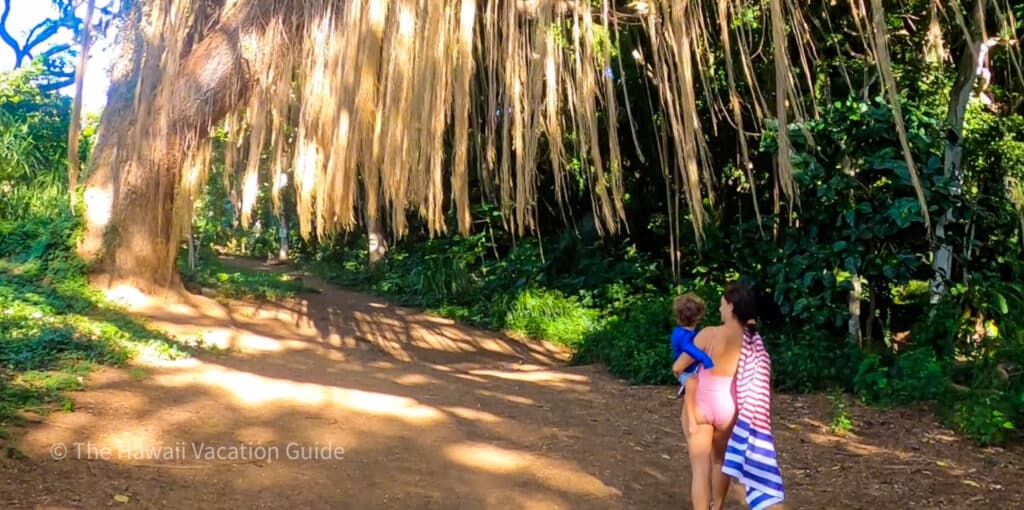
The best time to visit Kauai
Kauai is called the Garden Isle thanks to its lush landscape. The northernmost island is stunning, but rain is a requirement to keep the island so beautiful. Kauai gets a bit more of the extreme weather during winter in Hawaii, which means you should expect a little rain for at least part of your trip.
The best time to visit Kauai is May, August, September, and the beginning of October, when skies are usually blue and the ocean swells aren’t as big as during the summer months. We love spending the summer months up on the North Shore of Kauai, in Hanalei. (Check out some of the best things to do in Hanalei).
And if you’re hoping to visit the Napali coast, summer is the best time to do so. While the ocean always seems to be a little bit rough on that side, it is significantly calmer during the summer months. And if you are staying on the north shore, there are boats that leave directly from there, making the trip out shorter! You’ll definitely want to see our review of the best Napali Coast boat tours before deciding where to go.
Read more about the best time to visit Kauai.
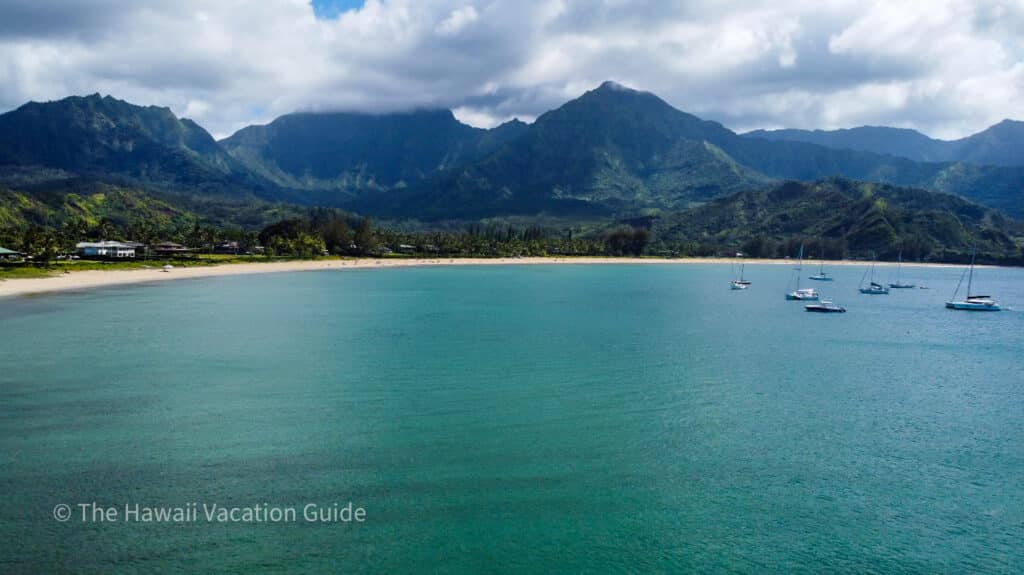
The best time to visit the Big Island
The Big Island is unique in that it sees its biggest surge in visitors over Christmas and New Years, so if you can, that’s the time to avoid that island. But we love going pretty much any other month of the year. The best time to visit the Big Island again is during those shoulder months of April, May, September, and October. You likely won’t see big swells on the Kohala coast during those months, which means some of the best beaches on the Big Island are easily accessible.
If you’re headed out to the Big Island to go Manta Ray night snorkeling, you’re in luck.
Unlike whale watching, you can go manta ray night snorkeling any time of year. There is no “season” as far as seeing these beautiful creatures — they live in Hawaii year round.
That said, during the winter months the ocean conditions can be rougher so you’ll see a higher number of tours cancelled thanks to dangerous conditions. If you’re planning to visit during the winter months and you want to go manta ray night snorkeling, be sure to book your trip at the beginning of your visit so you can reschedule if it gets cancelled due to bad weather or bad ocean conditions.
Before you book, check out our review of the best Manta Ray night snorkeling tours. There are a lot to choose from but we did our best to find a range of options that we think provide great experiences.
Read more about the best time to visit the Big Island.
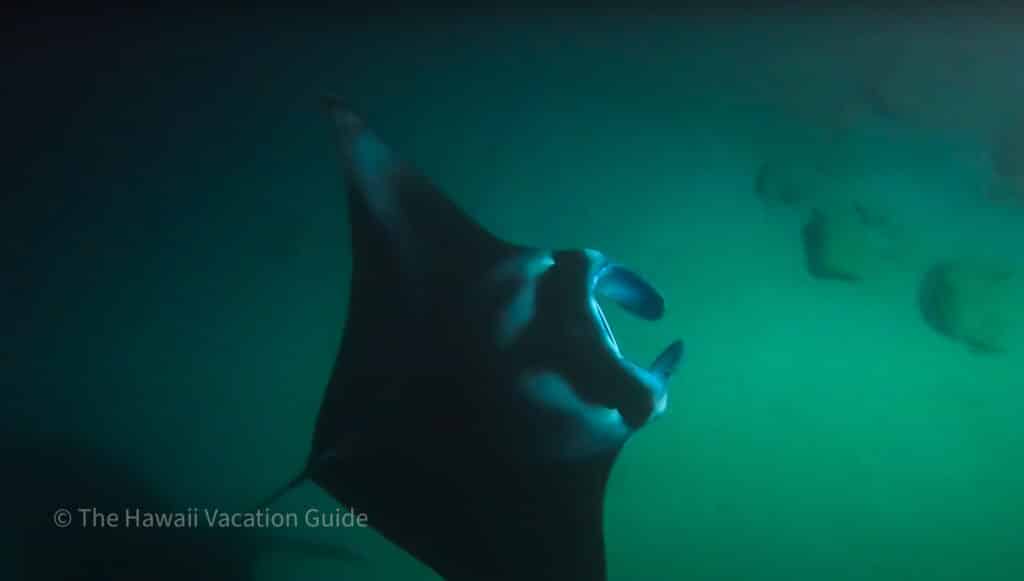
The Worst Times to Visit Hawaii
While you can figure out the best time to visit Hawaii using the charts above, you can also deduce the worst times to visit Hawaii.
The busy times to visit Hawaii are the winter and summer. The winter brings snowbirds who wish to escape the cold. Many annual travelers to Hawaii stay in timeshares or vacation rentals. Hence, vacation rental prices are higher than average during the winter.
The summer is the peak season with school being out and summer vacations. Hawaii hit a million monthly visitors in July 2019. Post-pandemic, the numbers are returning as July 2023 experienced 932,713 visitors.
Hotel rates skyrocketed compared to previous years (why are Hawaii hotels so expensive (plus clever ways to save)) in 2023.

The Christmas season is another expensive time to visit due to the popularity of the islands for the holidays. While we say it is the worst time to visit Hawaii, Christmas is a special time on the islands. In fact, the holidays are our favorite season on the islands.
See our Christmas Magic in Hawaii: 19 Tips to Plan Your Hawaii Christmas Vacation and our Things to Do in Hawaii During Christmas to determine if this is the best time to visit Hawaii for you.
Regardless of the time, you choose to visit Hawaii, you will have a blast with our Wayfinder Itineraries. Our itineraries finish the planning for you with one download. Perfectly planned excursion days, where to eat, where to stay, a video guide, and more.
Learn more about our Hawaiian Island Itineraries below.
Things To Do Each Month in Hawaii
If you still aren’t quite sure when you want to visit Hawaii, we have a few things that are happening on the islands each month to help you decide.
Things to do in January
In January you have some big swells on the north of the islands, so visit the north shore of any island to watch big wave surfers show off their skills (just don’t try it yourself!). You can also celebrate Chinese New Year in Honolulu’s Chinatown, watch the PGA tour in Kapalua on Maui, and go whale watching on any island. Check out our full breakdown of visiting Hawaii in January.
Things to do in February
In February, things are still all about the whales. Head to the Maui whale watching festival or head on a tour. Watch free, multicultural performing arts and participate in hands-on demonstrations at the Waimea Cherry Festival. And check out Waimea Town Celebration, There’s a rodeo, canoe races, foot races, ice-cream eating contests, and many other fun activities. Get all you need to know about Hawaii in February.
Things to do in March
Listen to spectacular performers and participate in educational programs at the Honolulu Festival in early March. Show off your fitness skills at the Lavaman Triathlon Marathon or the Big Island International Marathon. Listen to Hawaii’s iconic instrument at the Ukulele Festival at Waikoloa (and then take a ukulele class so you can learn to play!) Here’s more on visiting Hawaii in March.
Things to do in April
Like we mentioned, April is a great time to visit Hawaii! Check out the Merrie Monarch Festival that celebrates the legacy of King David Kalakaua on the Big Island. Enjoy delicious flavors at the Big Island Chocolate Festival. Enjoy free entry to Hawaii’s National Parks to celebrate the first day of National Park Week. Get important details on visiting Hawaii in April.
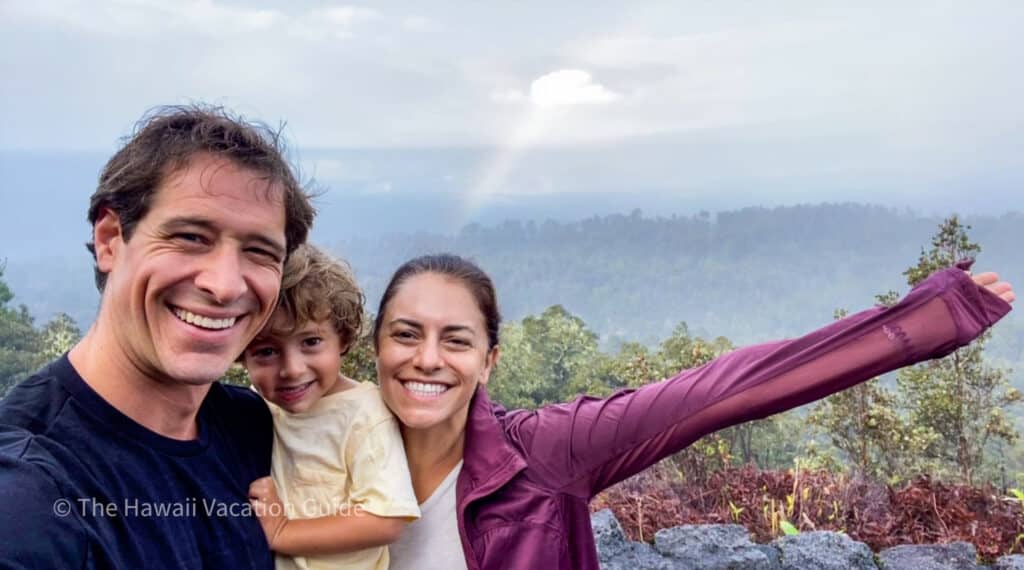
Things to do in May
May Day is Lei Day in Hawaii. Check out the display of leis at the Annual Lei Day Celebration on May 1st. Participate in a remembrance ceremony at Ala Moana Beach Park on Oahu with the Lantern Floating Hawaii ceremony.
Learn more about visiting Hawaii in May.
Things to do in June
There are a number of celebrations on each island to celebrate King Kamehameha, the father of the Hawaiian Kingdom. Celebrate King Kamehameha Day with the floral parade that starts at ‘Iolani Palace in downtown Honolulu. The other islands (Maui, Kauai, Big Island, and Molokai) all have floral parades as well. You can also watch statue lei draping on Oahu and the Big Island. Read all about visiting Hawaii in June.
Things to do in July
The summer is full of fun! Watch 4th of July fireworks in Waikiki, Turtle Bay, and other locations. Take part in the Pineapple Festival on Lanai or enjoy a Pineapple Tour on Maui. Check out the Waikiki Steel Guitar Week festivities. July is busy in Hawaii, so read more so you go prepared!
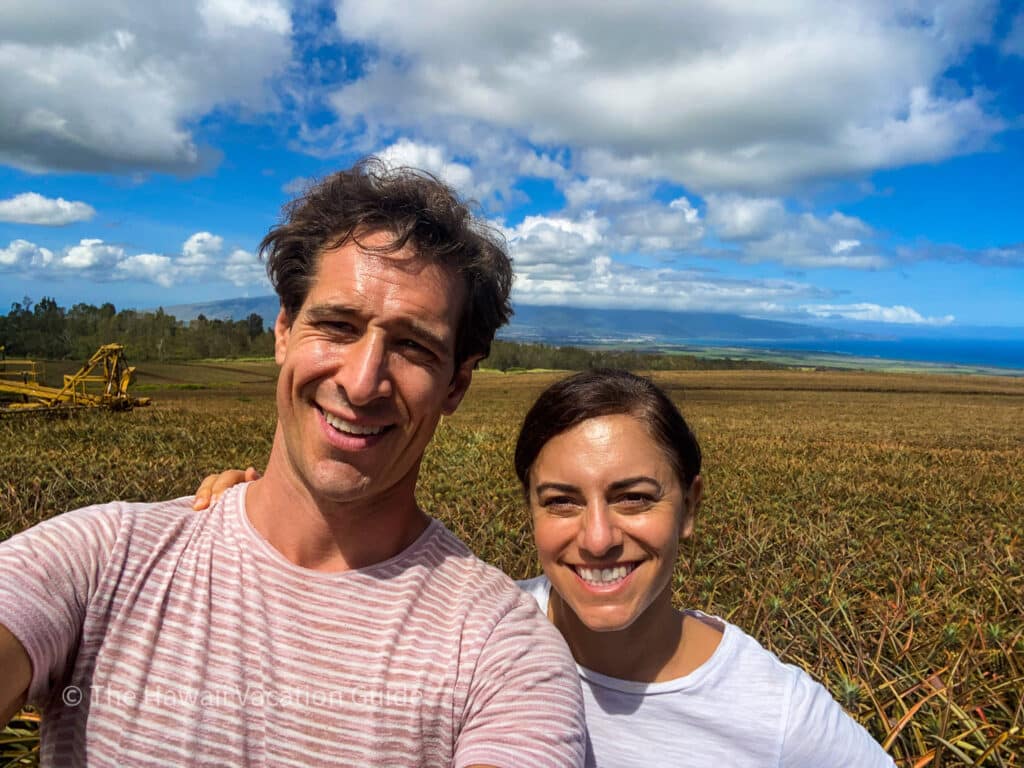
Things to do in August
Listen to some great music at the Hawaiian Slack Key Festival at the Waikiki Aquarium, watch Waikiki’s premier ocean sports festival, Duke’s OceanFest, and run in the Kauai 50 or the Maunawili Out and Back races. If you’re thinking of visiting in August, check out our Hawaii in August article for everything you need to know.
Things to do in September
Check out the Annual Waikiki Ho’olaule’a beachfront street festival and celebrate Hawaiian culture and watch hula competitions at the Kauai Mokihana Festival. September is one of the best months to visit Hawaii, so make sure you read all about visiting Hawaii in September before you book that trip!
Things to do in October
One of the most affordable months to visit Hawaii, there is still plenty to do in October. Visit the Hawaii Food and Wine festival or the Honolulu on tap beer festival. Or explore upcountry Maui and make a stop at the Kula Country Farms pumpkin patch. Definitely read more about visiting Hawaii in October and why it’s so great.
Things to do in November
Enjoy Hula O Na Keiki, the children’s hula competition that’s held each November at the Kaʻanapali Beach Hotel on Maui. Or celebrate the coffee harvest at the Kona Coffee Cultural Festival. This is Hawaii’s longest-running food festival, and there’s always plenty to do (and lots of tasty coffee to enjoy!). Read all about visiting Hawaii in November.
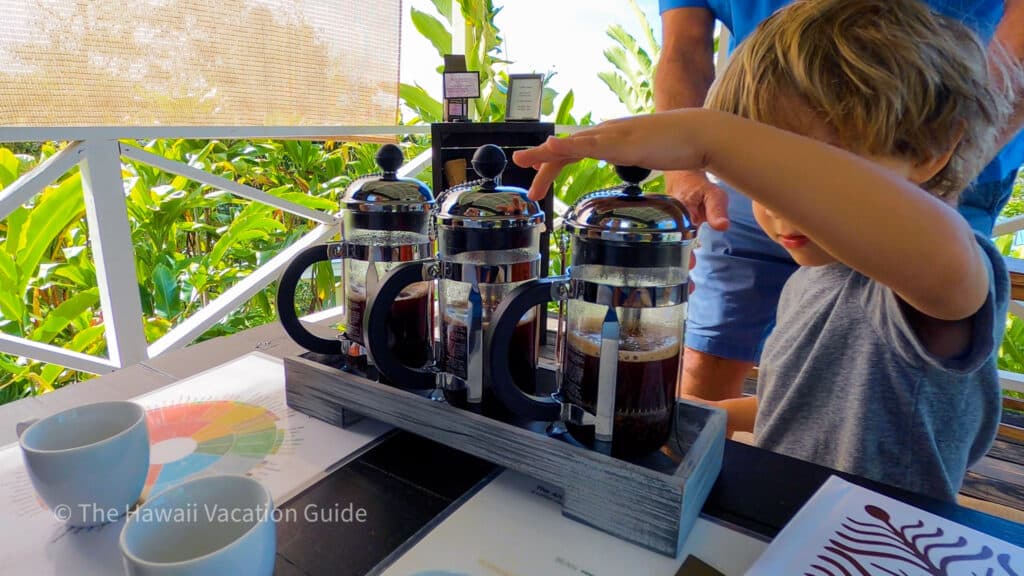
Things to do in December
Visiting in December can be busy or quiet, depending on when during the month you decide to go. You can participate in the Pearl Harbor memorial event, visit the Honolulu City Lights displays, run the Honolulu marathon, and see palm trees decorated in Christmas lights. Get the scoop on visiting Hawaii in December.
